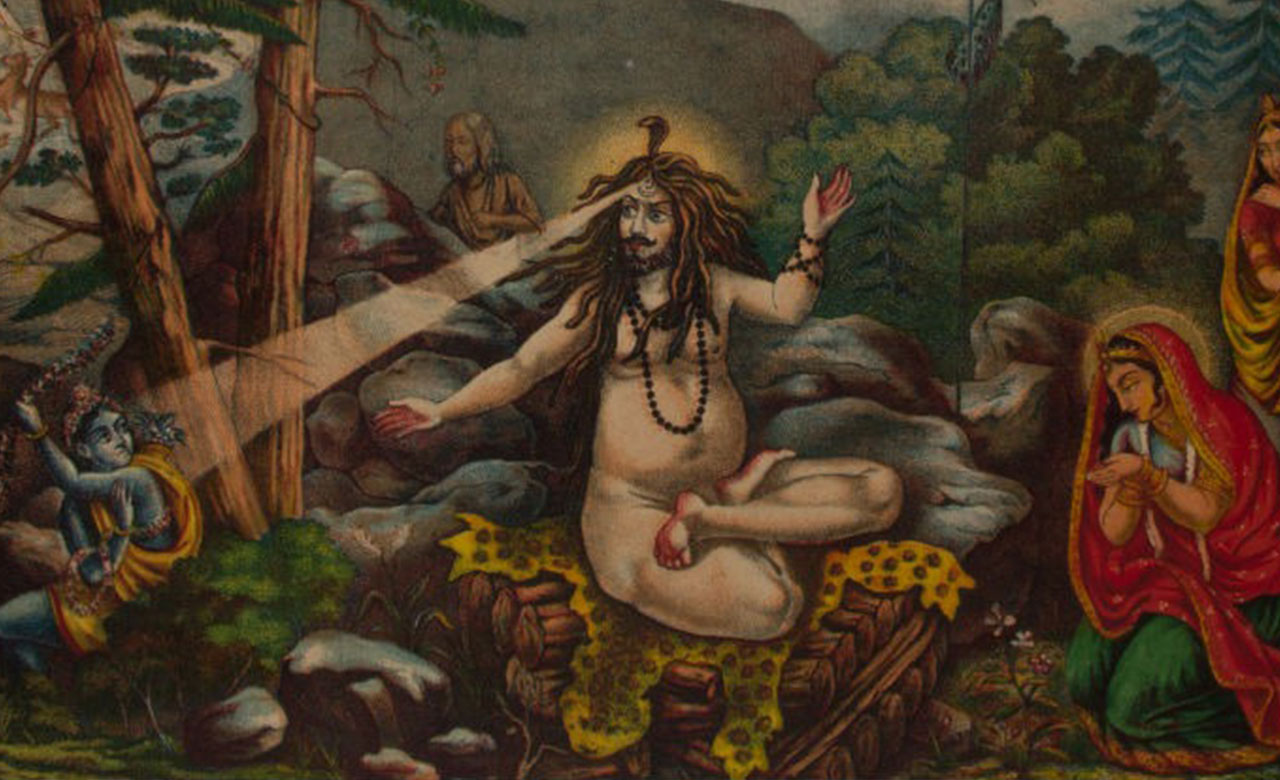
Spirituality
A Fish, An Infant, and A Guru
Welcome to the part 2 of the Nath sect blogs. In a previous blog, we learned about the origins, Gurus, and teachings of the Nath sect. May it be a Pranayama, meditation, sun salutations, or other yoga positions, almost all of them are derived from the ancient Hatha yoga system. In India, this Hatha yoga is associated with the ancient tradition of Nath Sampradaya. In this blog, we will meet a yogi responsible for reviving this ancient Hatha yoga system – Mahayogi Matsyendranatha.
As yoga has emerged as a mainstream exercise, currently there are several varieties of Yoga being practiced around the globe. May it be Bikram, Doga, beer yoga, power yoga, or Yin yoga. But do you know that these variations have their roots in one ancient yoga system called Hatha Yoga?
The Legend:
Almost eleven hundred years ago in India, a fisherman had a son. But being under extremely inauspicious stars, the fisherman and his wife threw that kid into the ocean where a large fish swallowed him. Nevertheless, the infant managed to stay inside the giant creature for many years.
The fish swam to the bottom of the ocean, where Lord Shiva was sharing the secrets of yoga with beloved Parvati. After hearing the secrets of yoga from Adi Yogi (the first yogi) Himself, the kid started practicing yoga inside the belly of that fish.
Practicing the teachings of Adi Yogi Shiva for twelve years, the kid emerged as a Siddha (a perfected one). He was known as Matsyendranatha, or the one who is Lord of the fishes. He was also called Macchindranath, Minanatha, or Minapa as per Buddhist and Jain traditions. After coming out of the fish, he learned Vedas from the Aadi Guru (the first teacher) Lord Dattatreya himself.
The story teaches us two things. Matsyendranatha remained inside the fish for twelve years to master Hatha Yoga without worldly distractions. Like him, one has to practice, work and learn from the experience for twelve years without interruption to become a true master.
Secondly, a fish represents Maya or illusion. It drags you to the bottom. But when you meet a true Guru, it’s your duty to learn everything he has to offer, practice and master it, and then rise out of the Maya with the help of actual knowledge.
Matsyendranatha had eight disciples, who helped him carry the word of Lord Shiva to the farthest corners of the world. The eight disciples with their Master Matsyendranatha are collectively called Navanatha (Nine Nathas). Matsyendranatha’s eight disciples are as follows: Gorakshanath, Jalandharnath, Kanifnath (Kanhoba), Gahininath, Bhartrinath, Revan Nath, Charpatinath, and Naganath. Innumerous sects arise from this lineage, starting from Matsyendranatha.
Works of Yogi Matsyendranatha:
He wrote a scripture called Kaula Dnyana Nirnaya, which comprises the Hatha yoga works. To this date, knowingly, and mostly unknowingly, his work has impacted the millions of human beings on earth in the form of Yoga Asanas, even after eleven hundred years.
He also wrote Matsyendrasamhita and Akula Viratantra, explaining the tantric side of the Natha sect. It includes Yagya (fire ritual), self-imposed restraints, Mantra chanting, worship, and Sadhana.
These days, yoga has become a type of physical exercise. But Matsyendranatha revived yoga for not just a means to have a healthy body but a way to transform one’s body into a Sahaja Siddha state, a state where one merges himself with absolute reality.
A revolutionary
At the end of the 11h century in India, tantra practices were shunned, considering dark practices. However, due to the works of Matsyendranatha and his eight disciples, it started to regain its lost position in the spiritual space of India. Natha practitioners started challenging the orthodox premice and concepts by exploring so-called dark and shunned practices to understand the relationship between humans and the divine. This revival created the fertile land to flourish the movements like Vaishnavism, Shaktism, and Bhakti movement through saints like Kabir and Dnyaneshwara.
By re-inventing Hatha Yoga, the Nath sect stirred up the spiritual space of the entire Indian subcontinent, making yoga a household name once again. Through Hatha yoga, once again, stressed the importance of the wellbeing of a physical body along with healthy spirituality. This led to the emergence of worrier ascetic clans in India, which resisted the invaders, protecting the Sanatana Dharma.
We hope this blog helps shed light on the life of Mahayogi Matsyendranatha of Natha Sampradaya. In the next blog, we will take a look at the life and teachings of Gorakshanatha, the second Guru of the Nath Sampradaya.
To stay connected and to receive information about spirituality, please subscribe to our mailing list. In case of any queries, please write to us at info@chamundaswamiji.com.
Post a Comment
-
Subscribe to Our Blog
-
Categories
-
Popular Articles
- Dead moth in the house. What universe is trying to tell you?
- Spiritual Meaning of Moth
- Vivah Bandhan Curse – What Is It and How to Spiritually Heal It.
- What are Beej Mantras?
- The Dasa Mahavidyas
- Tripura Sundari | The Dasa Mahavidya
- Maa Bhuvaneshwari | The Dasa Mahavidyas
- Ramakrishna Paramhansa – The Man who almost became a Woman
- The Five Shades of Tantra
- Maa Chinnamasta | The Dasa Mahavidyas



